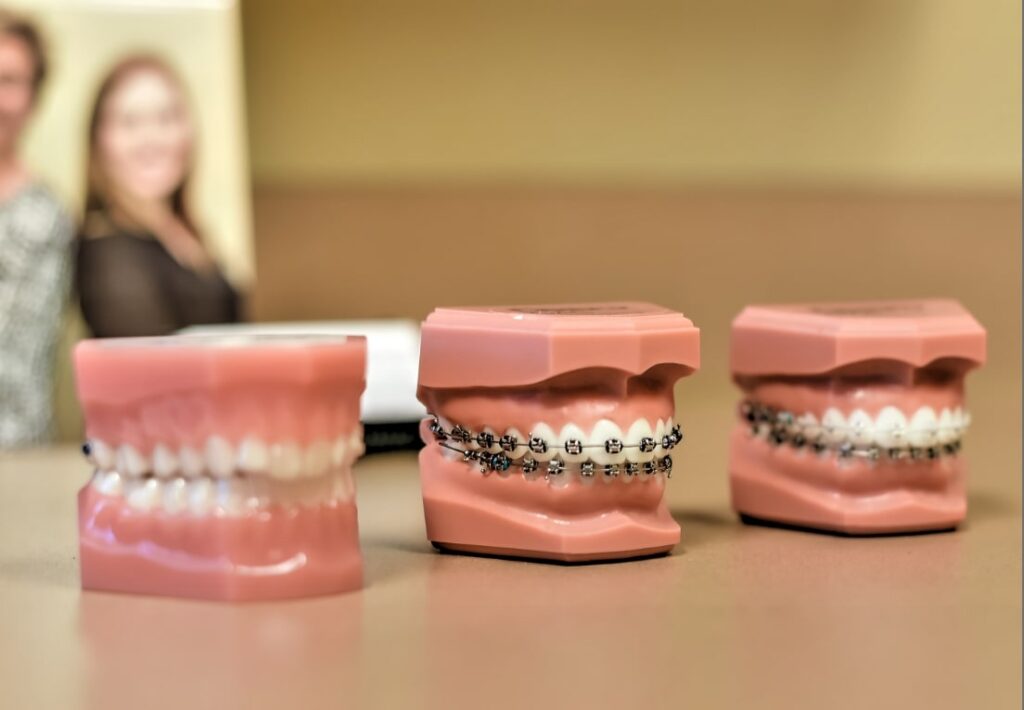Top Tips for Choosing the Best Cumming Orthodontist for Braces and Aligners
Top Tips for Choosing the Best Cumming Orthodontist for Braces and Aligners
Blog Article
Comprehensive Guide to Orthodontics Treatments for Remedying Dental Misalignments
Understanding the details of each procedure, including their devices, advantages, and prospective downsides, is vital in making educated decisions about one's orthodontic treatment. As we navigate through the extensive overview to orthodontic procedures for remedying dental misalignments, the detailed information of each approach will unravel, dropping light on the course toward a practical and harmonious dental alignment.
Orthodontic Procedures Summary

Along with typical dental braces and clear aligners, orthodontists might also advise various other treatments like headgear, palatal expanders, or retainers to address specific alignment concerns (orthodontist). These procedures are tailored to each individual's unique needs and might involve a mix of treatments to accomplish the desired outcomes. Routine adjustments and tracking are crucial parts of orthodontic therapy to make certain development is on track and to make any type of essential alterations in the process. By undertaking orthodontic treatments, clients can not just accomplish a straighter smile yet also improve their total dental health and wellness and feature.
Conventional Braces: How They Function
When thinking about orthodontic therapies for dental imbalances, standard dental braces attract attention as a tried and true technique for remedying teeth placing. Standard dental braces contain brackets, wires, and bands that interact to apply continual pressure on the teeth, gradually moving them into the desired alignment. The brackets are connected to the teeth making use of a special adhesive, and the wires are threaded through the braces. By changing the stress of the cables, orthodontists can manage the instructions and pressure related to each tooth, directing them into proper alignment over time.
As stress is applied to the teeth through the braces, the bone bordering the teeth is improved to sustain the new tooth settings. People will require regular changes at the orthodontist's office to guarantee the dental braces proceed to apply the proper stress for effective teeth motion.
Invisible Aligners: Disadvantages and pros
Invisible aligners use a practical and discreet alternative to standard dental braces for remedying oral imbalances. These clear, customized trays are essentially undetectable when used, making them an enticing choice for people seeking a more visually pleasing orthodontic treatment. Among the primary benefits of undetectable aligners is their removability, permitting much easier upkeep of dental hygiene contrasted to conventional braces. Patients can remove the aligners before eating or cleaning their teeth, lowering the threat of food getting stuck in the home appliance and simplifying the cleaning process.

Surgical Orthodontic Options
Surgical treatments in orthodontics existing viable alternatives for resolving intricate dental misalignments that may not be efficiently resolved via traditional orthodontic treatments. While typical dental braces and unnoticeable aligners can correct many orthodontic issues, certain cases require surgical treatment to achieve ideal results. Surgical orthodontic choices are typically recommended for Read Full Report serious malocclusions, significant jaw disparities, and cases where the underlying bone framework requires alteration to achieve correct placement.
One usual medical orthodontic treatment is orthognathic surgical procedure, which involves rearranging the jaws to remedy functional issues such as problem talking or chewing. This surgical procedure is often done in partnership with an orthodontist who assists line up the teeth before and after the procedure. Surgical orthodontics might additionally include procedures to subject influenced teeth, remove excess gum cells, or reshape the jawbone to develop a much more harmonious face profile.
Before thinking about medical orthodontic options, people undergo a thorough assessment to establish the requirement and prospective benefits of such treatments. braces. While surgery may seem complicated, it can dramatically enhance both the function and aesthetic appeals of the smile in cases where conventional orthodontic therapies fail
Retainers and Post-Treatment Care

Post-treatment treatment involves complying with the orthodontist's guidelines carefully. This might include proper oral hygiene techniques, attending follow-up visits, and using the retainers as suggested. Failing to abide by post-treatment treatment directions can cause relapse, where the teeth gradually relocate back in the direction of their initial settings. Regular retainer wear, good dental hygiene, and normal oral check-ups are necessary for preserving the results accomplished via orthodontic surgical treatment and making certain the long-lasting security of the fixed oral alignment.
Final Thought
Finally, orthodontic treatments supply numerous alternatives for remedying dental imbalances. Conventional braces use metal brackets and wires to change teeth into correct placement. Invisible aligners supply a more very discreet alternative but may not appropriate for all situations. Surgical orthodontic alternatives are readily available for more extreme imbalances. Retainers are typically used post-treatment to keep the brand-new alignment. Overall, orthodontic procedures can efficiently boost dental wellness and visual appearance.
As we browse through the thorough guide to orthodontic treatments for dealing with oral misalignments, the intricate information of each approach will unfold, dropping light on the course towards a practical and harmonious oral placement. - cumming invisalign
One of the most common orthodontic treatments is the usage of braces, which consist of metal braces and wires that apply gentle stress to progressively change teeth right into the preferred placement.When considering orthodontic treatments for dental imbalances, conventional braces stand out as our website a tried and true technique for fixing teeth positioning. Additionally, unnoticeable aligners may not be ideal for intricate orthodontic issues that need more significant teeth activity, as they are usually recommended for light to modest situations. Retainers are customized orthodontic devices made to hold teeth in their dealt with placements after the conclusion of orthodontic therapy.
Report this page